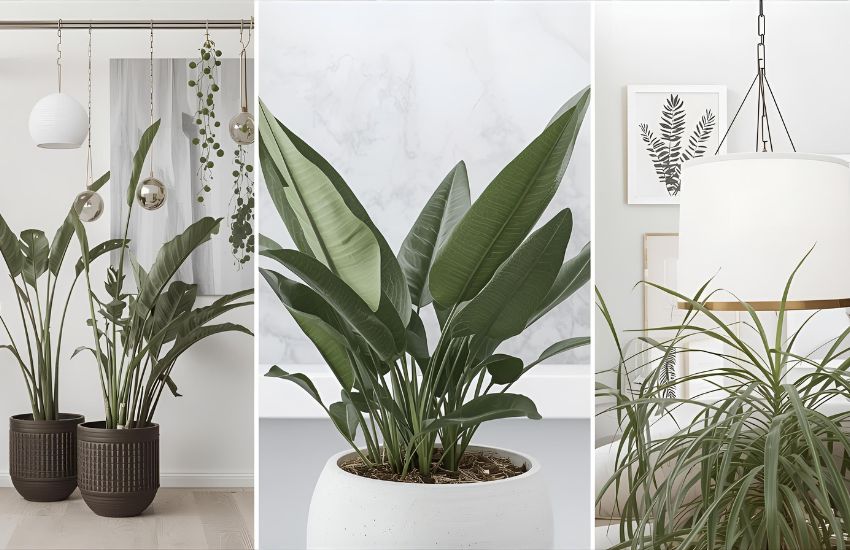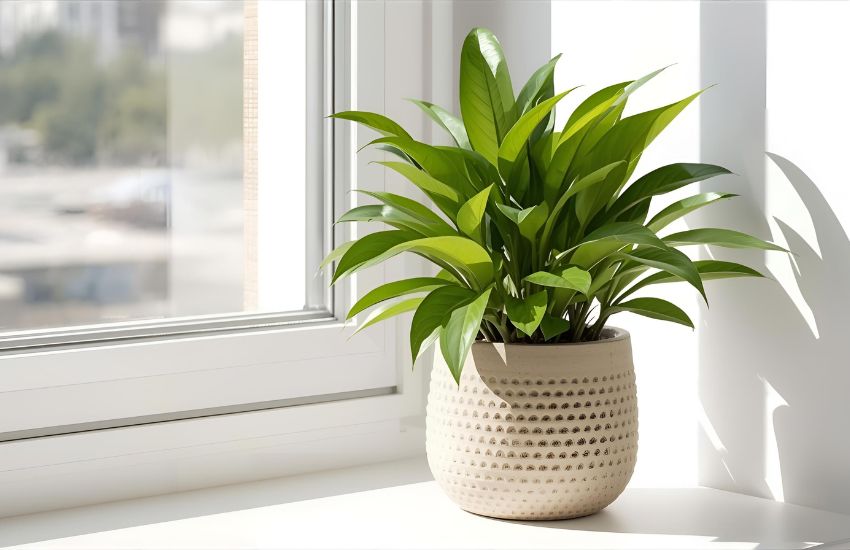Curious about a houseplant that combines elegance with minimal effort? The Dwarf ZZ Plant, or Zamioculcas zamiifolia, offers lush, glossy foliage that can thrive even in low light corners of your home or office. Its compact stalks and slow-growing nature make it a perfect choice for small pots, stylish desks, or cozy shelves. Unlike many plants, it tolerates occasional neglect, but understanding its needs can help you avoid common issues like yellow leaves or overwatering.
The Dwarf ZZ Plant (Zamioculcas zamiifolia) is a compact, elegant houseplant ideal for modern interiors. With its glossy, dark green leaves, it thrives in low to bright indirect light and requires minimal watering. Perfect for stylish spaces, this low-maintenance plant enhances indoor aesthetics while improving air quality, making it a sophisticated choice for your home or office.
In this guide, you’ll learn practical tips on how to care for your Dwarf ZZ Plant, including how to repot it, manage yellow leaves, provide ideal light conditions, and keep it thriving without stress. By following these steps, your Zenzii houseplant will remain a stylish, resilient addition to any space.
Essential Dwarf ZZ Plant Care Guide for Thriving Indoor Greenery at Home

The Dwarf ZZ Plant is a standout among indoor plants, offering lush, dark green foliage while remaining low-maintenance and easy to grow. Whether you are exploring zz plant varieties or focusing on a dwarf cultivar, understanding the plant’s growth habit and needs ensures your greenery thrives beautifully.
Light Requirements: Bright or Low-Indirect Illumination
While the classic ZZ Plant tolerates low light, the dwarf variety truly flourishes in bright indirect light. Avoid placing your plant in direct sunlight, which can scorch its glossy leaflets and hinder new growth. The Raven ZZ Plant, in particular, showcases dark green to almost black foliage that contrasts beautifully with bright lime indoor plants nearby.
Watering and Soil: Avoiding Overwatering
A common concern when you care for a ZZ Plant is root rot caused by overwatering. The plant’s rhizome stores water, allowing zz’s stalks to survive dry periods. Ensure proper drainage in your pot and water every two to three weeks, adjusting for your home’s humidity. Yellow leaves often signal overwatering, while a dry, firm rhizome indicates the plant’s needs are met.
Fertilizing and Maintenance
This low-maintenance plant benefits from occasional fertilizer during its growing season. Inspect the plant regularly for pests and use neem oil if needed. Keep an eye out for yellow leaves, which may indicate stress or nutrient imbalance. Dwarf cultivars, including the Raven ZZ Plant, maintain a compact growth habit but still respond well to care for zz routines.
Toxicity and Compatibility
While easy to care for, remember that plants are mildly toxic. Keep them away from pets and small children. For variety, pair your ZZ Plant with other easy-to-grow indoor plants like the snake plant for a visually appealing, low-maintenance green space.
Encouraging New Growth and Variegation
Your dwarf ZZ Plant can develop vibrant new growth, especially if placed in optimal lighting. Certain zz plant varieties may even variegate or produce bright lime leaflets, adding extra visual interest to your collection. Regularly check the rhizome, stalks, and leaflets to ensure the plant thrives.
Propagation Tips and Plant Care Secrets for Dedicated Plant Parents

- Propagation is a simple way to expand your collection; ZZ Plants and other statement plants are easy to propagate from rhizomes or leaf cuttings.
- Native to eastern Africa, these plants thrive with medium to bright indirect light, which supports new growth and prevents scorch.
- Young leaflets appear bright lime in their youth and gradually mature to emerald green, giving a naturally shiny look to your indoor greenery.
- The plant’s compact growth habit and oval-shaped leaves make it ideal for small spaces, offering a timeless aesthetic.
- Soil should be completely dry before watering to prevent root rot; ZZ Plants have low water requirements and can tolerate occasional forget to water moments.
- New growth typically emerges within 2-3 weeks after propagation, rewarding your patience and care.
- Keep your plant pest-free and monitor for yellow leaves as a sign of overwatering or stress.
- Following these propagation tips ensures your plant’s oval-shaped leaves remain vibrant and the greenery stays healthy, from youth to an emerald green in their maturity.
- Learning how to care for a ZZ Plant according to these practices helps it thrive as a statement plant in your home.
Conclusion
Caring for your Dwarf ZZ Plant ensures it remains a striking addition to any indoor space. Its slightly bulbous stalks and features smaller leaves make it a compact, low-maintenance statement plant that thrives with the right balance of light and water. Remember to water only when the soil is completely dry and to water less during cooler months.
Dropping leaves are a sign of overwatering or stress, so monitor your plant closely and treat affected leaves with an insecticidal soap if needed. Fertilize in winter sparingly and avoid direct sunlight that can scorch the leaves. Thanks to its ability to tolerate low light and occasional neglect, this plant is ideal for busy homes, though keep in mind it is mildly toxic to humans, children and pets.
With consistent care every 2-3 weeks, your Dwarf ZZ Plant will flourish, maintaining its vibrant foliage and naturally shiny appearance. Elevate your indoor greenery today—bring home a Dwarf ZZ Plant and let its compact growth habit and resilient charm transform your living space.
Frequently Asked Questions (Dwarf ZZ Plant: A Modern Zamioculcas Zamiifolia Care Guide for Stylish Spaces)
What makes the Dwarf ZZ Plant ideal for modern indoor spaces?
The Dwarf ZZ Plant is perfect for modern interiors due to its compact size, glossy green leaves, and ability to thrive in low light. Its sculptural form complements minimalist décor while requiring very little attention, making it an excellent choice for busy plant lovers or office environments.
How often should you water a Dwarf ZZ Plant?
Water the Dwarf ZZ Plant only when the top two inches of soil feel dry. Overwatering can cause root rot, so it’s best to let the soil dry completely between waterings. In winter, reduce watering frequency as the plant’s growth naturally slows down.
What type of light is best for a Dwarf ZZ Plant?
The Dwarf ZZ Plant thrives in medium to low indirect light but can tolerate bright, filtered light. Avoid direct sunlight, which can scorch its leaves. Its adaptability to low light makes it a great plant for shaded rooms and offices.
How can you keep a Dwarf ZZ Plant healthy and glossy?
To maintain its glossy leaves, wipe them gently with a damp cloth to remove dust. Use well-draining soil and a pot with drainage holes. Feed the plant with a balanced liquid fertilizer once every two months during the growing season for best results.
